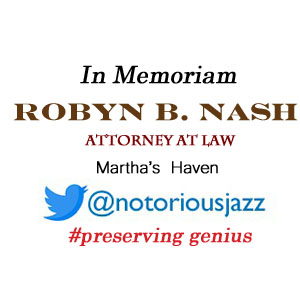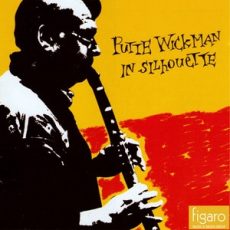
Daily Dose Of Jazz…
Putte Wickman was born Hans Olof Wickman on September 10, 1924 in Falun, Sweden and grew up in Borlänge, Sweden where his parents hoped he would become a lawyer. He nagged them to allow him to go to high school in Stockholm, Sweden and when he arrived in the capital he still did not know what jazz was and probably the only 15 year-old who did not.
Not having access to a piano in Stockholm, he was given a clarinet by his mother as a Christmas present. As it turned out, he started to hang out with the worst elements in the class, those with jazz records. Wickman considered himself self-taught, having never taken classes on the instrument.
Artie Shaw and Benny Goodman were the role models for the young Wickman, who, in 1944 had turned to music full-time. He was taken on as band leader at Stockholm’s Nalen. He led a band at Nalen for eleven years, and during the 1960s he ran the big band at Gröna Lund and at Puttes, the club he co-owned, at Hornstull in Stockholm.
In 1994, Wickman received the Illis Quorum gold medal, today the highest award that can be conferred upon a private Swedish citizen by the government of Sweden.
Clarinetist Putte Wickman, who was a member of the Royal Swedish Academy of Music and active as a musician until shortly before his passing, died on February 14, 2006.
More Posts: bandleader,clarinet,history,instrumental,jazz,music
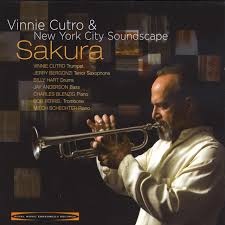
Daily Dose Of Jazz…
Vinnie Cutro was born in New Jersey on September 9, 1953 and received his formal musical training throughout his formative years. He continued his education at New Jersey University, receiving his B.A in Music Education, then got his Masters in Jazz Performance from New York University. He furthered his studies in jazz composition, classical studies, jazz arranging and counterpoint with Dr. Tom Boras and Jim McNeely.
His working education began as a freelance musician in the New York City area. During the past 30 years Vinnie has performed with Horace Silver, Buddy Rich and Lionel Hampton. During his tenure with the latter he performed guest appearances with various American symphonic orchestras.
He has traveled extensively throughout the world appearing at jazz festivals and concerts in Europe, Japan, Africa, Canada, South America and the U.S.A. Cutro’s debut release as a leader, Blues for the Optimist, came in 1995 and featured Bob Mintzer, Jim McNeely, Victor Jones, and Mike Richmond. His sophomore release, Aberration, features guitarist Mike Stern, trombonist Bob Farrel, bassist Martin Wind, Sarah Jane Cion on piano, Victor Jones on drums and pianist Mitch Schechter.
Trumpeter Vinnie Cutro continues to compose, record and perform in the New York City area with his new ensemble New York City Soundscape.
More Posts: bandleader,history,instrumental,jazz,music,trumpet
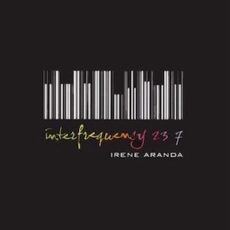
Daily Dose Of Jazz…
Irene Aranda was born in Jaén, Andalucía, Spain on September 2, 1980 and started to play piano at age seven under the guidance of her maternal grandparents. She graduated from the Conservatory of Music in Granada and complimented her classical training by attending piano performance and composition classes with Gerardo López Laguna, Guillermo González, Fernando Puchol, Pilar Bilbao, Antonio J. Flores and Javier Darías, among the most notable.
She was self-taught in jazz and free improvisation, she later studied with Peter Zack, Eduard Simons, Chano Domínguez, Nikky Illes, Mike Ph. Mosman, Greg Hopkins, David Pastor, Jordi Farrés Tomás, Pete Churchill, Perico Sambeat, Tony Reedus, etc.
Her first work as a leader, Interfrequency 23 7, brought her great critical acclaim which led her to participate in numerous festivals. Since her debut release in 2007 she has released six more albums.
Freed from stereotypes, Irene has gone on to perform and collaborate with Paolo Fresu, Toots Thielemans, Maria Pia De Vito, Baldo Martínez and Bojan Z among others. Aranda has played with Don Malfon, Brandon López, Markus Breuss, Johannes Nästestjö, Samuel Blasser, Germán Díaz, Agustí Fernández, Joanna Mattrey, Lucía Martínez, Javier Carmona, Núria Andorrà, Marc Egea and numerous others.
Pianist, improviser, composer Irene Aranda continues to swim against the stream of pianists with her creativity and exploration in her music.
More Posts: bandleader,composer,history,improviser,instrumental,jazz,music,piano
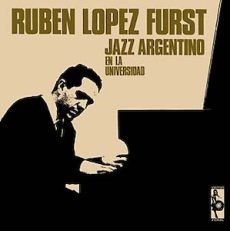
Daily Dose Of Jazz…
Rubén “Baby” López Fürst was born July 26, 1937 in Buenos Aires, Argentina. From the age of five he studied music and piano, and was soon attracted to jazz. In 1951 the 14 year old Ruben got the nickname Baby from the other musicians because he was a child. He made his debut on the jazz scene performing at the concerts organized by the Hot Club de Buenos Aires.
In 1953 Baby played in a string ensemble led by the López Fürst brothers who performed a jazz concert at the Provincial Hotel in the city of Mar del Plata, Argentina. With his brother Héctor on banjo and him on piano they created the Hot Jammers group and made two 78-single records for Victor. He went on to be part of the Dixie band, The Picking Up Timers.
In 1957 the big succes of Oscar Alemán inspired Baby to leave the piano and take up the guitar, trying to emulate one of his idols: Django Reinhardt. Then began regular performances with a string-group named the Blue Strings. It was a quartet in the vein of gypsy string swing.
Modern jazz captivated him in 1959, when he listened to Gerry Mulligan at the Hot Club de Montevideo in Uruguay. Trying to play those new sounds, in 1962 he joined the modern group of pianist Sergio Mihanovich. On the two albums recorded in 1962, the work began Argentine cool jazz with saxophonist Leandro “Gato” Barbieri, Sergio Mihanovich on piano, drummer Osvaldo “Pichi” Mazzei, trumpeter Rubén Barbieri, Oscar López Ruiz on electric guitar, Rubén López Furst on piano, Domingo Cura on percussion, Osvaldo Bissio vibráphone, and baritone saxophonist Julio Darré.
Fürst is one of the most important pianists in the history of Argentinean jazz and opted to stay in Buenos Aires and make a name for himself at home unlike his counterparts Barbieri and Lalo Schiffrin. He played for over 20 years, mainly with his own trio or quartet.
The hard bop musician also formed a swing group. Pianist and guitarist Baby Fürst, whose primary influences were Teddy Wilson and Bill Evans, died on July 26, 2000 at the age of 63 in Buenos Aires.
More Posts: bandleader,guitar,history,instrumental,jazz,music,piano

Daily Dose Of Jazz…
Susanne Alt was born April 15, 1978 in Würzburg, Germany to Hans-Joachim and Maria Alt. Her father is a composer, poet and piano teacher, and mother a guitar teacher. After studying classical piano and guitar with her parents, she began playing the saxophone at thirteen and successfully participated in several saxophone competitions.
While still in high-school she started taking lessons in classical saxophone at the Meistersingerkonservatorium Nuremberg between 1993 and 1995, becoming a full-time student there in the 1995–96 academic year. During this period Susanne began practicing jazz and after winning the Siemens-Jazz-Förderpreis, she moved to the Netherlands to continue her studies at the Hilversums Conservatorium. Returning to Germany for postgraduate studies, she enrolled in the Berlin University of the Arts in 2000.
Forming the Susanne Alt Quartet in 2003, in the following year she released her debut album, Nocturne at Bimhuis, Amsterdam, Netherlands. Five jazz albums later, she released the funk album Saxify in 2016, preceded by the 7-inch single Saxify. The album features 36 musicians, amongst them are Fred Wesley, Michael “Clip” Payne, Michael Hampton, Rodney “Skeet” Curtis, and Roger Smith of Tower Of Power.
Alt has collaborated with a number of notable musicians and ensembles and has also toured worldwide. Saxophonist and composer Susanne Alt is based in Amsterdam, and continues to pursue her desire for new musical experiences.
More Posts: bandleader,composer,history,instrumental,jazz,music,saxophone




